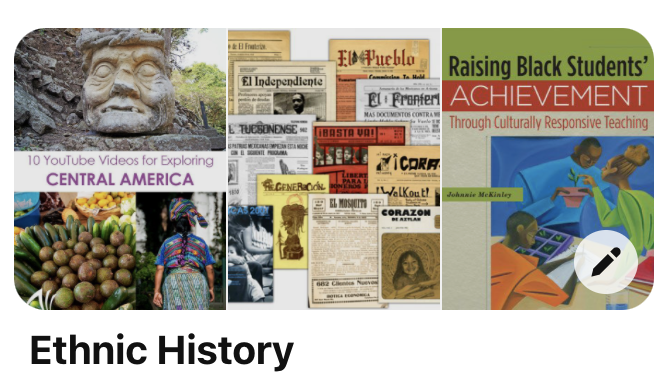Cultural Intelligence and Critical Thinking- Pinterest Board
Critical Thinking
Critical Thinking is not a new topic for education, but it has emerged again as a vital component to preparing our students for higher learning and the road ahead. It’s new emergence has made me excited because there is such a need for higher functioning and high level thought processes. This has become extremely evident as we are hearing from more people in society through social media, I think we have all realized that there was a lack of emphasis on critical analysis in school. For students like ours with advanced coursework and students needing to build the skills to either be identified or excel in such programming, this skill is vital for their success. Critical thinking allows for students to be academically stimulated and challenged and teaches students to use reasoning abilities to develop creative responses to real-world problems.
Through the resources provided through this Pinterest board, you can find anything from a critical thinking sentence stems, activities, and strategies to encourage more critical thinking. As I conducted research about the importance of critical thinking in classrooms I came across Harvy Siegal’s article about critical thinking dispositions. Siegal even goes so far to say that critical thinking is the most important aim of education. It appears that I am not the only one that sees the benefits of higher-order processing skills! If you are at the end of this paragraph and you are still pondering on what critical thinking is, Siegal defines it as forming practical conclusions from the evidence given. I would also go a step further and say that if the information is not given, the ability to research and draw conclusions about the evidence found to be conclusive. Either way, the importance of this important skill will prove to be the saving grace for our students and society.
Ethnic Studies
Although there has been much controversy these days about the inclusion of ethnic and cultural inclusion for all learners, there is still a significant need to be inclusive in our classrooms. In the US, there are now more BIPOC (Black,[Latino], Indigenous, People of color) than at any other time in the history of our nation. In the development of modern schooling, most BILPOC students were not even allowed to attend school or learn. We have obviously progressed past those times and our student’s needs have changed. Teaching Ethnic studies is not only a great idea because it naturally imbeds critical thinking into the learning processes, but is is also positively impactful for non BILPOC students as well. Teaching all students about the cultures represented in their communities, will create future grownups that have a greater understanding of the people and the world around them. The other important point about Ethnic Studies is that it should not simply be a topic in social studies classrooms. The history of BILPOC people should be included across all content areas in order to increase student engagement and success. This helps create a welcoming and inclusive environment for all students.
Cultural Intelligence
As mentioned above when discussing the importance of critical thinking skills, this skill allows students to use reasoning abilities to develop creative responses to real-world problems. This is directly related to cultural and ethnic studies. The concept of Cultural intelligence derives from the acknowledgement that each culture demonstrates their intellectual abilities through specific cultural traits. No culture does this better than the other, it is the difference in intellectual ability, neurodiversity and cultural diversity that allows for students to demonstrate these traits differently in the classroom. Often these specific cultural traits are misinterpreted or deemed inappropriate for classrooms, but the various ways of learning creates a microcosm of what the real world will look like for our students. Stifling the varying cultural backgrounds for our classroom to look more “traditional” will continue to perpetuate the inequities that we see in our classrooms. Earlier I mentioned Siegal’s article about critical thinking and I really enjoyed how he connected multiculturalism into critical thinking development. He speaks about the moral and sociopolitical importance of respecting cultural differences. In order to process the world in a wider lens, one must understand other cultures and perspectives.
Course and Teaching Tools for Cultural Literacy
The question that I often get from educators when I step off my soapbox when advocating for critical thinking and ethnic studies education is how can I incorporate all of this into an already jam-packed lesson plan. Although there are several resources available in the Pinterest board below, I would also challenge the teacher by asking how important they thought ethnic history, critical thinking, and cultural intelligence was for increasing success for BILPOC students. If these topics were a priority or high on their list of important methods, then there will always be room to incorporate these educational strategies into their lesson planning. I hope that these resources will encourage you to incorporate these strategies into your classrooms, schools and organizations to increase the self-efficacy and success of our BILPOC students.
References
Kotzee, B. (2019). Education’s Epistemology: Rationality, Diversity, and Critical Thinking. Educational Theory, 69(2), 257–260. https://doi-org.unco.idm.oclc.org/10.1111/edth.12367





